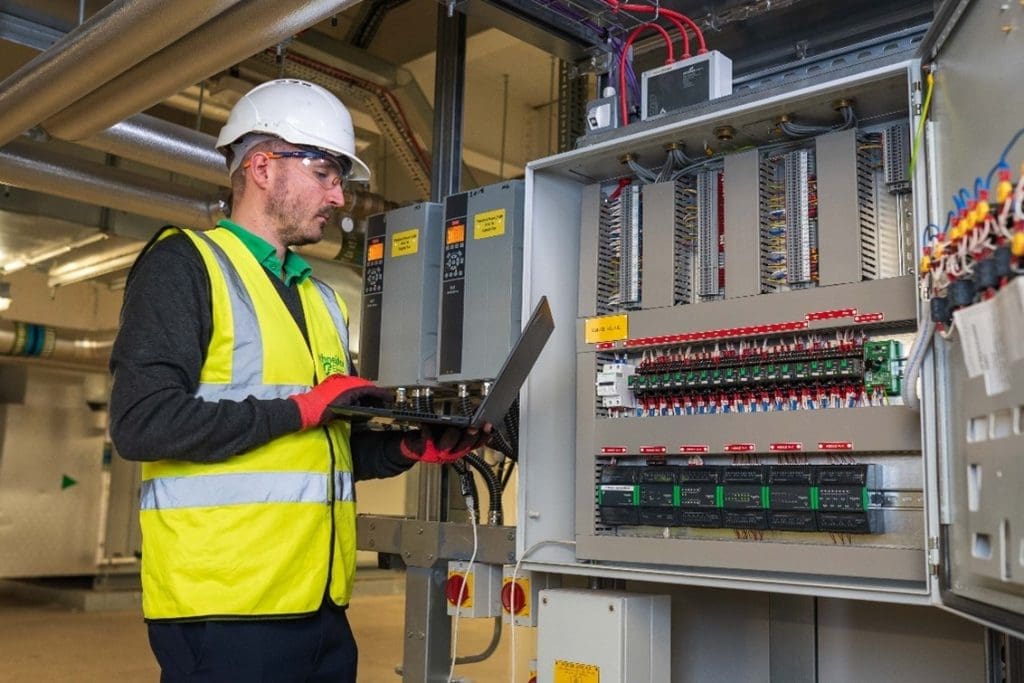Schneider Electric has sponsored this post.

Planned annual shutdowns are a routine part of facility operations. Usually timed around slower seasons, they offer a chance to complete maintenance tasks that can’t be done while equipment is running. However, the opportunity is often underutilized.
“People will do very minimal planning, or sometimes even no planning,” says Bill Brown, chief engineer at Schneider Electric. “Without really taking a hard look at what needs to be done, inevitably some things get left out.”
In some cases, improvements to existing infrastructure take a backseat to more urgent tasks, such as construction projects. With the right support, however, shutdown periods can help facilities boost their operations uptime. Consulting services like Schneider Electric’s EcoConsult are giving teams the tools to plan smarter and make better use of their shutdown window.
Missed opportunities during planned downtime
Even when shutdowns are scheduled well in advance, teams often go in with limited visibility into actual system conditions. Maintenance tasks are typically guided by standard checklists—and while these may keep operations running in the short term, they also increase the risk of reactive maintenance. Opportunities to uncover deeper issues or improve equipment performance often go unnoticed.
“Without visibility to data, you end up doing too much guesswork,” says Brown. “When you do that and follow a set checklist, you’re not necessarily on the lookout for things that aren’t on the checklist but could very well make or break the reliability of the equipment if they’re not looked at and fixed.”
One common blind spot is equipment loading. If teams don’t have a clear understanding of whether components have been operating within their limits, they may miss signs of wear that can reduce equipment lifespan and lead to unplanned downtime later.
How EcoConsult helps teams prioritize and plan work
EcoConsult offers a more structured, data-driven approach to shutdown planning, starting with assessments of both safety risks and de-energization activities at the beginning of the process. In scenarios where facility teams don’t have an electrical maintenance plan in place, Schneider Electric works with them to build one from the ground up.
“We can use our expertise with these types of equipment and systems to make sure that the program is robust enough to keep things running reliably, that the right things are looked at during maintenance, and that things don’t get missed,” says Brown.
EcoConsult also helps facilities meet NFPA 70B requirements, including producing or updating one-line diagrams and completing studies such as short-circuit, protection coordination and arc flash analysis. These tools not only support compliance but also assist in determining which equipment needs attention during the shutdown.
“Let’s say, for example, we’re going through a facility, trying to find what the particular issues could be,” explains Brown. “If we find a piece of equipment that is overloaded, or a piece of equipment that doesn’t have a clear maintenance record, or we find a system where there’s some safety issue—some modification needed to make sure things stay safe—those types of findings can be pointed out in the report. With a report that outlines those issues, they become much easier to prioritize. They also become much more visible when presenting to the facility’s management.”
By looking at the state of the electrical system and identifying conditions that could otherwise be overlooked, EcoConsult helps teams further plan for modernization. “Depending on the make and model of the equipment, we know what can be done, how difficult it is, and all of that comes together to help plan a modernization project,” says Brown.
For example, if a facility has switchgear with obsolete circuit breakers but the overall structure is still in good condition, EcoConsult may recommend targeted replacements rather than full system overhauls. “Ultimately, we can make sure the proper budgeting support is put in place,” says Brown. “We know what kinds of upgrades provide a good bang for the buck and which ones don’t.”
Conclusion
With the right preparation and visibility, teams can use annual shutdown time to uncover risks, prioritize upgrades, and extend uptime. To make that possible, work needs to begin early—typically two to three months ahead of the scheduled outage. Time spent upfront ultimately allows more to be accomplished during the shutdown and ensures that teams are targeting the right priorities.
“The biggest reason companies aren’t as effective as they could be with their maintenance shutdowns is they simply lack resources,” says Brown. “They don’t have the time or the people to plan adequately—in which case, choosing the right partner becomes critical. We at Schneider Electric have got decades of experience doing this sort of thing. We have a lot of in-house experts. Because we know the equipment, and know it well, we can be a very effective partner to help make the most of a maintenance shutdown.”
To learn more, visit Schneider Electric.



